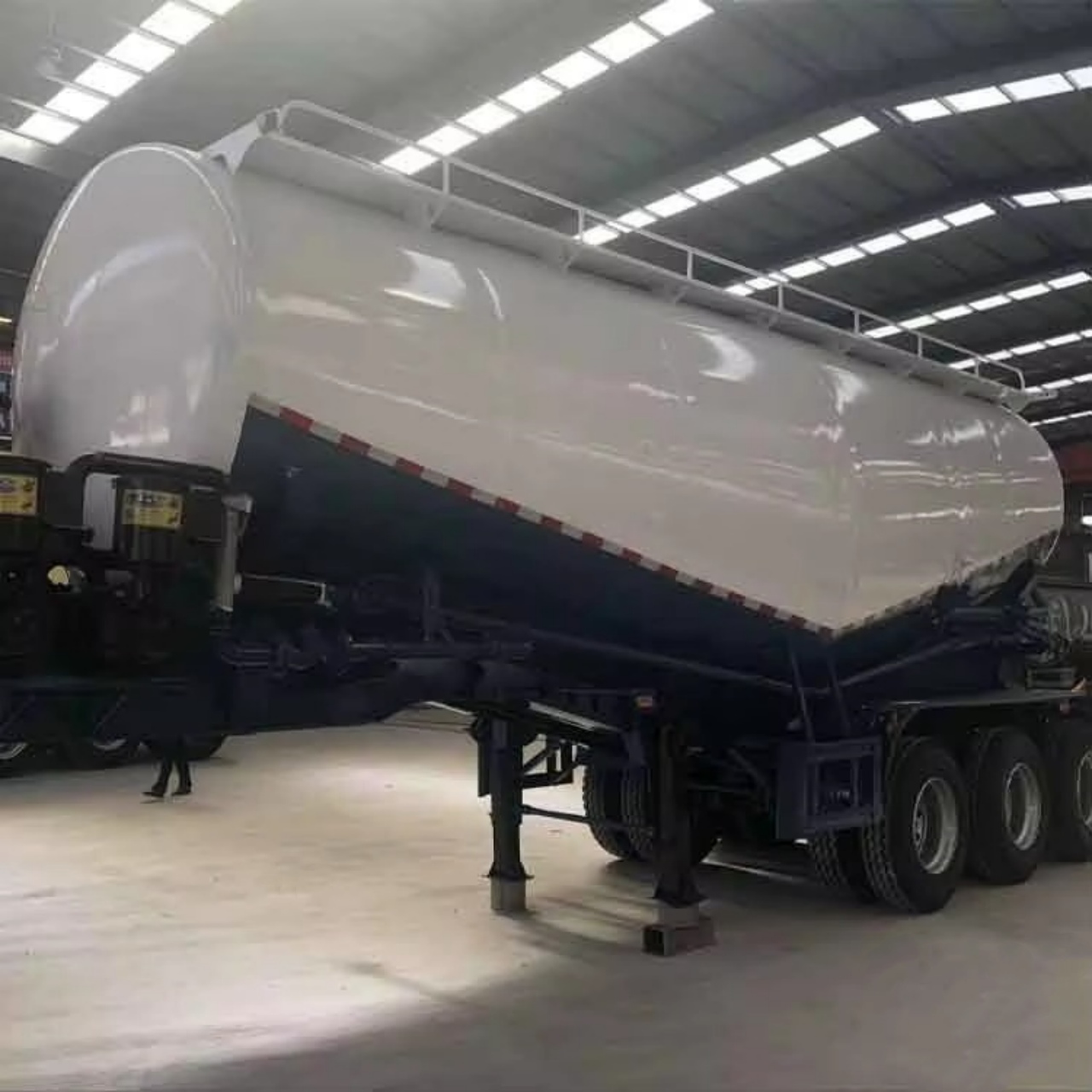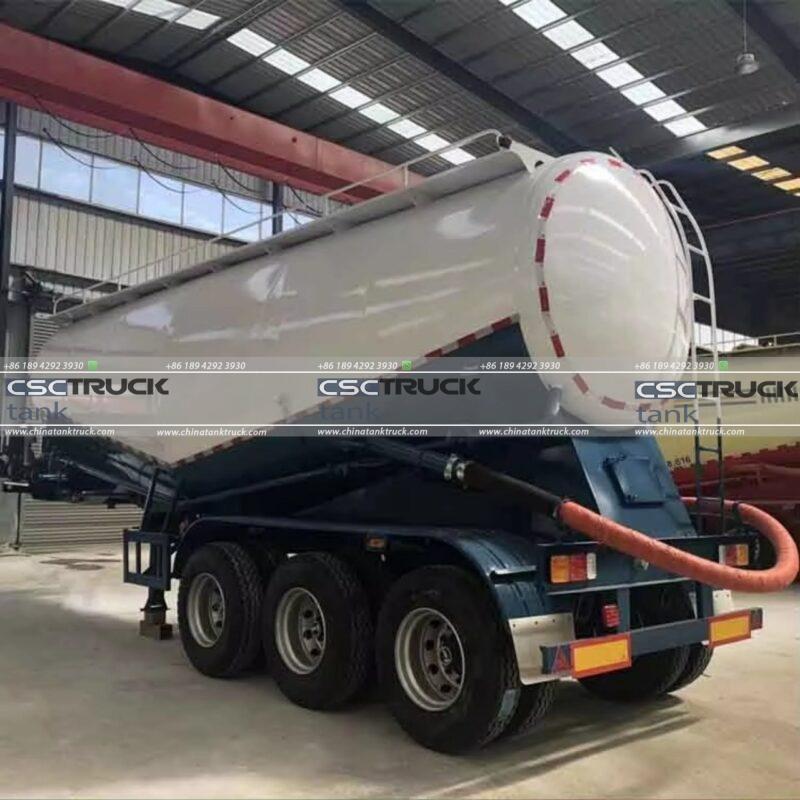In the world of logistics and bulk material transportation, specialized equipment is required to move goods efficiently from one place to another, especially when dealing with dry bulk commodities. One of the most important vehicles used for this purpose is the pneumatic trailer. This specialized trailer plays a vital role in transporting dry, free-flowing materials such as cement, flour, plastic pellets, and sand. But what exactly is a pneumatic trailer, how does it work, and what are its advantages? This article provides an in-depth look into pneumatic trailers, their structure, operation, and use in modern transportation.
Definition of a Pneumatic Trailer
A pneumatic trailer—also known as a dry bulk trailer or pneumatic tank trailer—is a type of tank trailer designed specifically to haul dry bulk commodities. Unlike liquid tankers, pneumatic trailers carry dry, granulated, or powdered materials that can be unloaded using compressed air. The trailer itself is a sealed tank made of aluminum or stainless steel, built to withstand internal pressure and designed for ease of unloading through a pressurized pneumatic system.
These trailers are named for the pneumatic (air pressure-based) system that allows them to efficiently unload materials without needing to tip the trailer or use mechanical means.
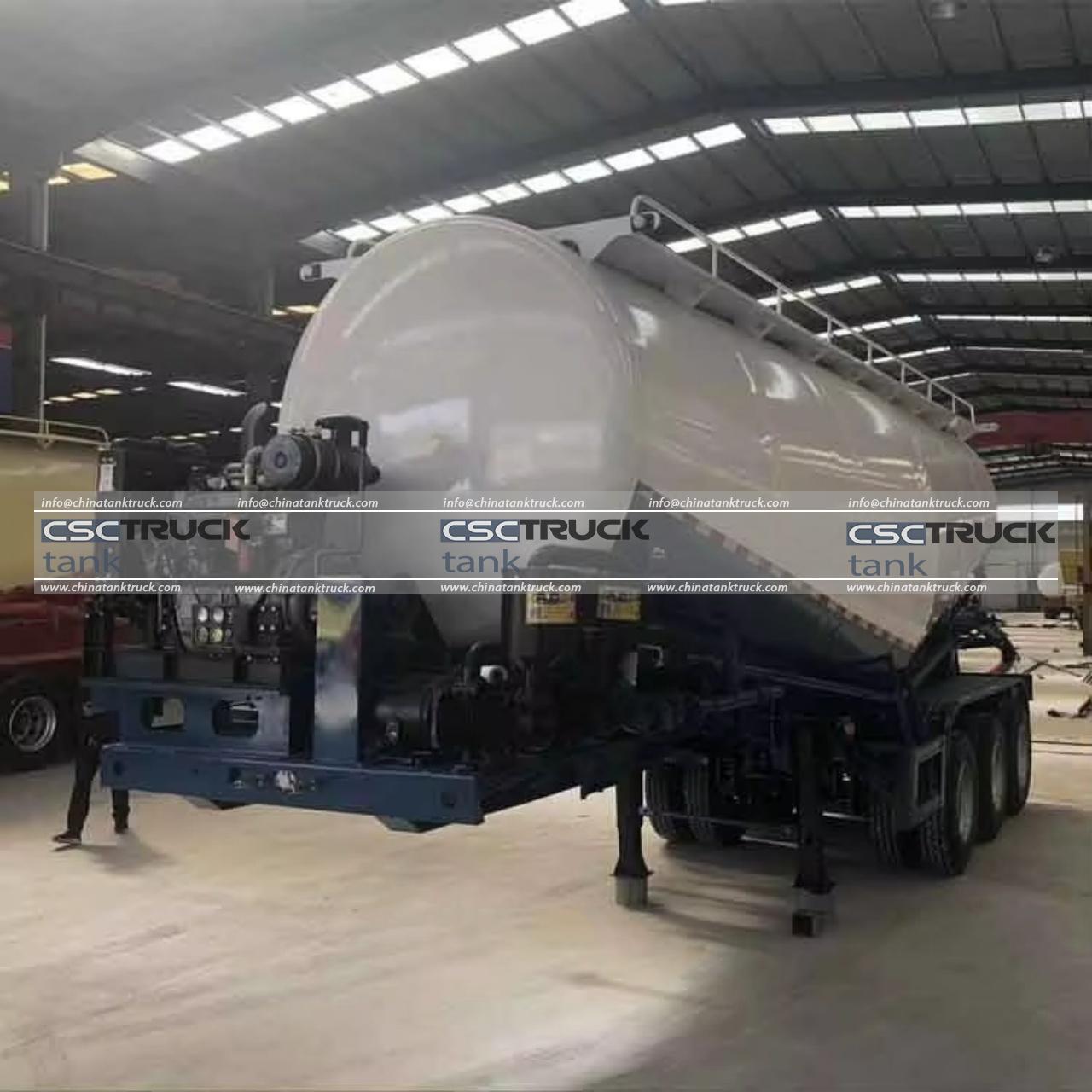
Structure and Components
The typical pneumatic trailer consists of several key components that work together to facilitate the transport and unloading of materials:
1. Tank Body
The main body of a pneumatic trailer is a cylindrical tank with cone-shaped hoppers at the bottom. These hoppers allow gravity to assist in the flow of materials toward the discharge outlets.
2. Manholes
Located on top of the tank, manholes are access points used for loading materials and for cleaning and inspection purposes.
3. Air Compressor
The pneumatic trailer is usually paired with an air compressor mounted on the tractor unit or powered externally. This compressor pushes air into the tank to pressurize it.
4. Aeration System
At the base of each hopper is an aeration pad or system that fluidizes the dry bulk material using air. This makes the material flow more easily toward the discharge outlet.
5. Discharge Valves and Piping
The materials are directed to the bottom discharge outlet via internal piping. Once pressurized air is applied, the material flows through discharge hoses into silos or storage tanks.
6. Relief Valves and Gauges
Pressure relief valves and gauges ensure the tank is not over-pressurized and help maintain safe operating conditions.
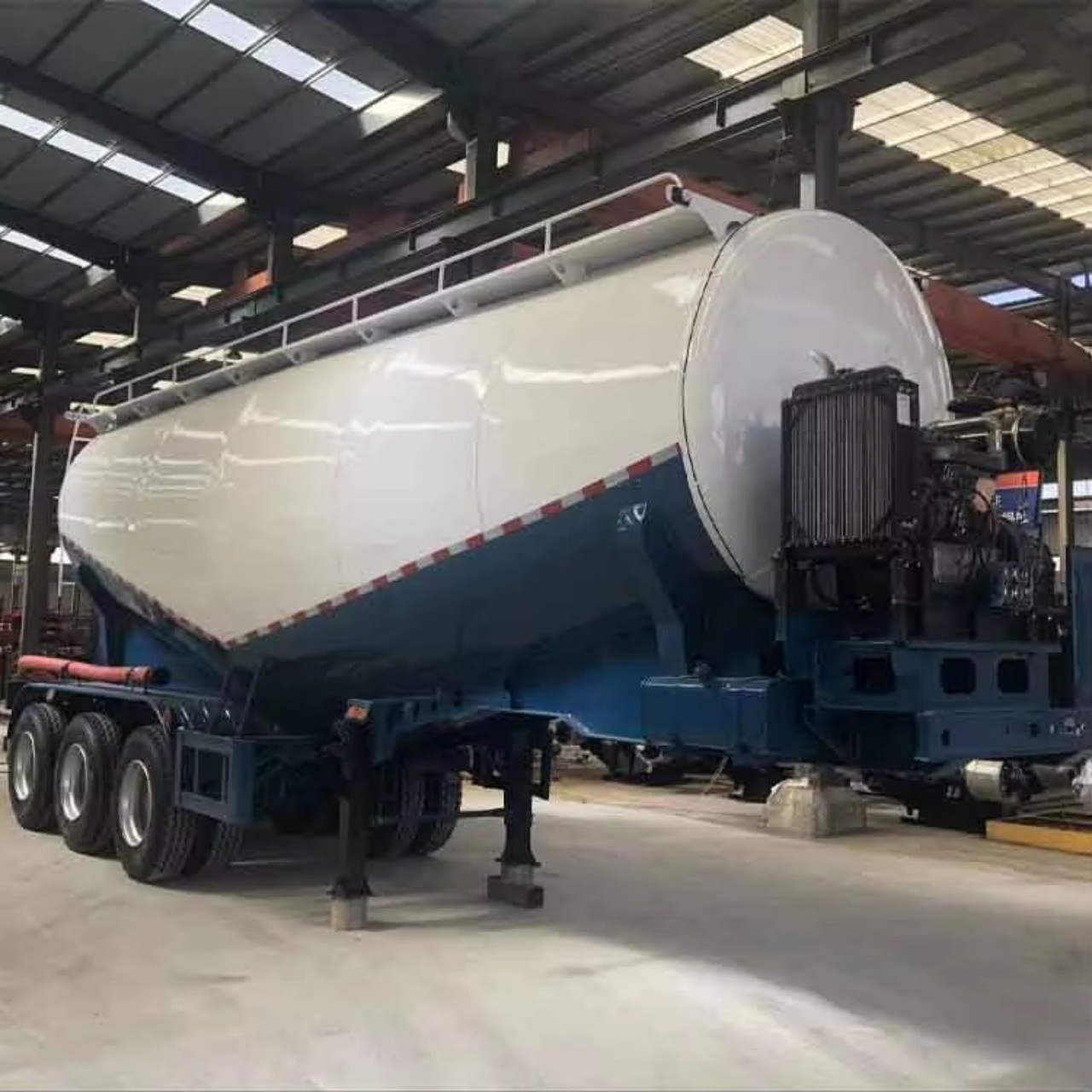
How a Pneumatic Trailer Works
The unloading process of a pneumatic trailer is what sets it apart from many other types of trailers:
- Loading: Dry bulk materials are loaded from the top manholes using gravity or conveyor systems. The trailer must be tightly sealed to prevent contamination and maintain pressure integrity.
- Pressurization: At the destination, an air compressor is activated to blow compressed air into the tank. This air creates pressure inside the sealed tank.
- Aeration: Air also flows into the aeration system at the base of the hoppers, which loosens or “fluidizes” the compacted dry material.
- Unloading: Once fluidized, the material flows smoothly through the piping and discharge hoses to the storage facility, guided by the pressure differential.
The entire process is efficient and clean, allowing bulk materials to be delivered directly into silos or enclosed storage systems without exposure to the external environment.
Common Materials Transported
Pneumatic trailers are highly versatile and can transport a wide range of dry bulk products. Common cargo includes:
- Cement and fly ash
- Flour, sugar, and other food-grade powders
- Plastic resins and pellets
- Lime and other industrial minerals
- Sand, especially frac sand used in oil and gas operations
Some trailers are designed with food-grade specifications (sanitary materials, easy-to-clean interiors) to carry edible products, while others are built for industrial materials.
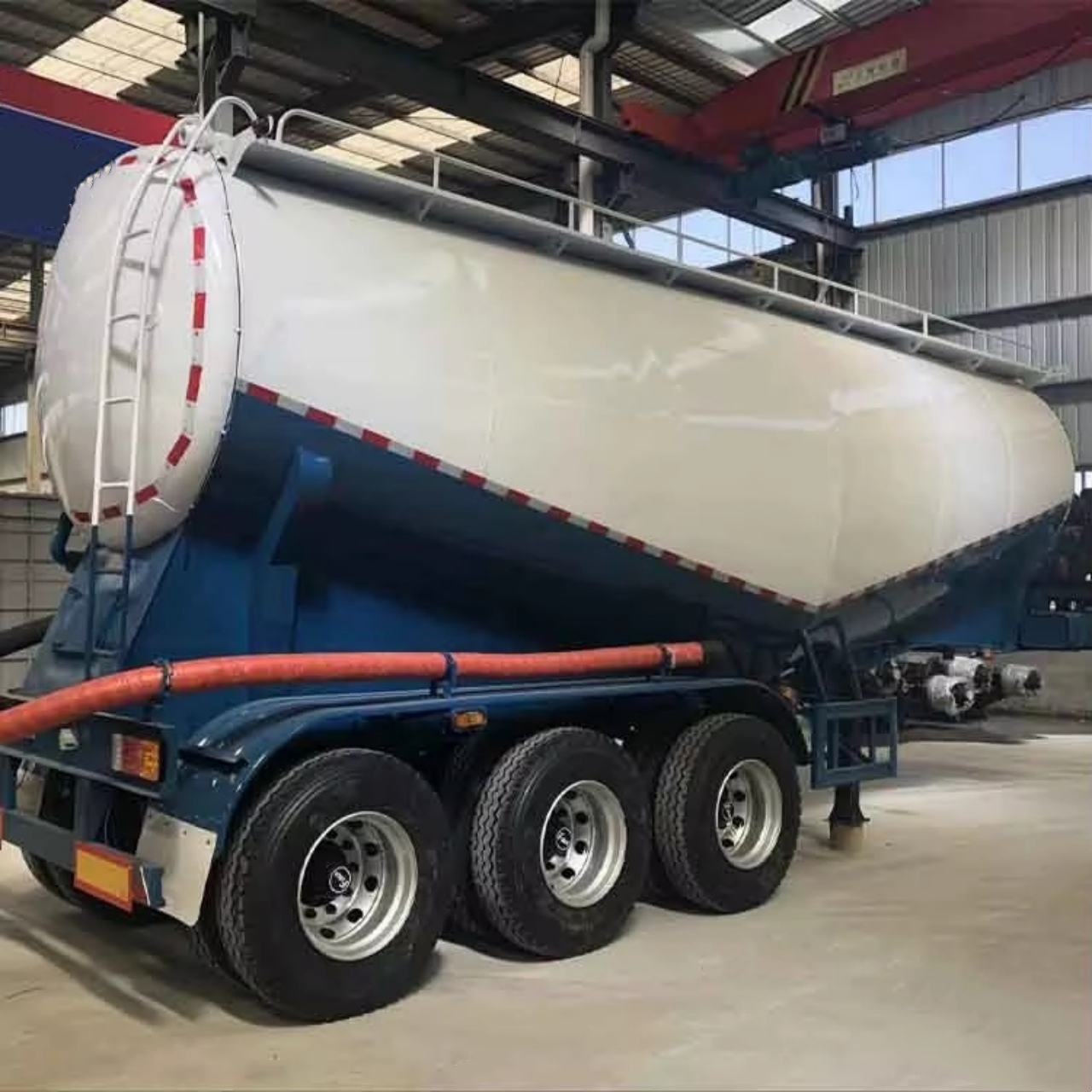
Types of Pneumatic Trailers
Pneumatic trailers can vary by size, capacity, and design, depending on the specific needs of the operator:
1. Standard Pneumatic Trailers
These are general-purpose trailers used for hauling the most common dry bulk materials. They range in capacity from 800 to 1,600 cubic feet and typically have three or four hopper compartments.
2. Food-Grade Pneumatic Trailers
Designed specifically for transporting consumable goods, these trailers use sanitary materials like stainless steel interiors and have features that allow thorough cleaning and sanitation.
3. High-Cube Trailers
With larger capacity (up to 2,000 cubic feet or more), these trailers are used for lower-density materials that take up more volume.
4. Mini-Bulk Trailers
Smaller in size, these trailers are useful in urban or tight delivery environments, offering more maneuverability.
Advantages of Pneumatic Trailers
The popularity of pneumatic trailers is due to several significant advantages they offer in the transportation of dry bulk goods:
1. Efficient Unloading
Since unloading is done pneumatically, there’s no need for tilting or external lifting equipment. This makes the process safer and more efficient.
2. Closed System
The sealed design prevents contamination and protects the cargo from moisture, dust, and environmental exposure, which is critical for both food-grade and industrial materials.
3. Reduced Labor
Minimal manual intervention is needed during unloading. The operator typically only needs to monitor pressure and control valves.
4. Versatility
Pneumatic trailers can be used to haul a wide variety of materials, and the same trailer can often be used for different products with appropriate cleaning.
5. Safety
With pressure relief valves and sealed compartments, pneumatic trailers are built for safe operation, even when handling potentially hazardous materials like fly ash.
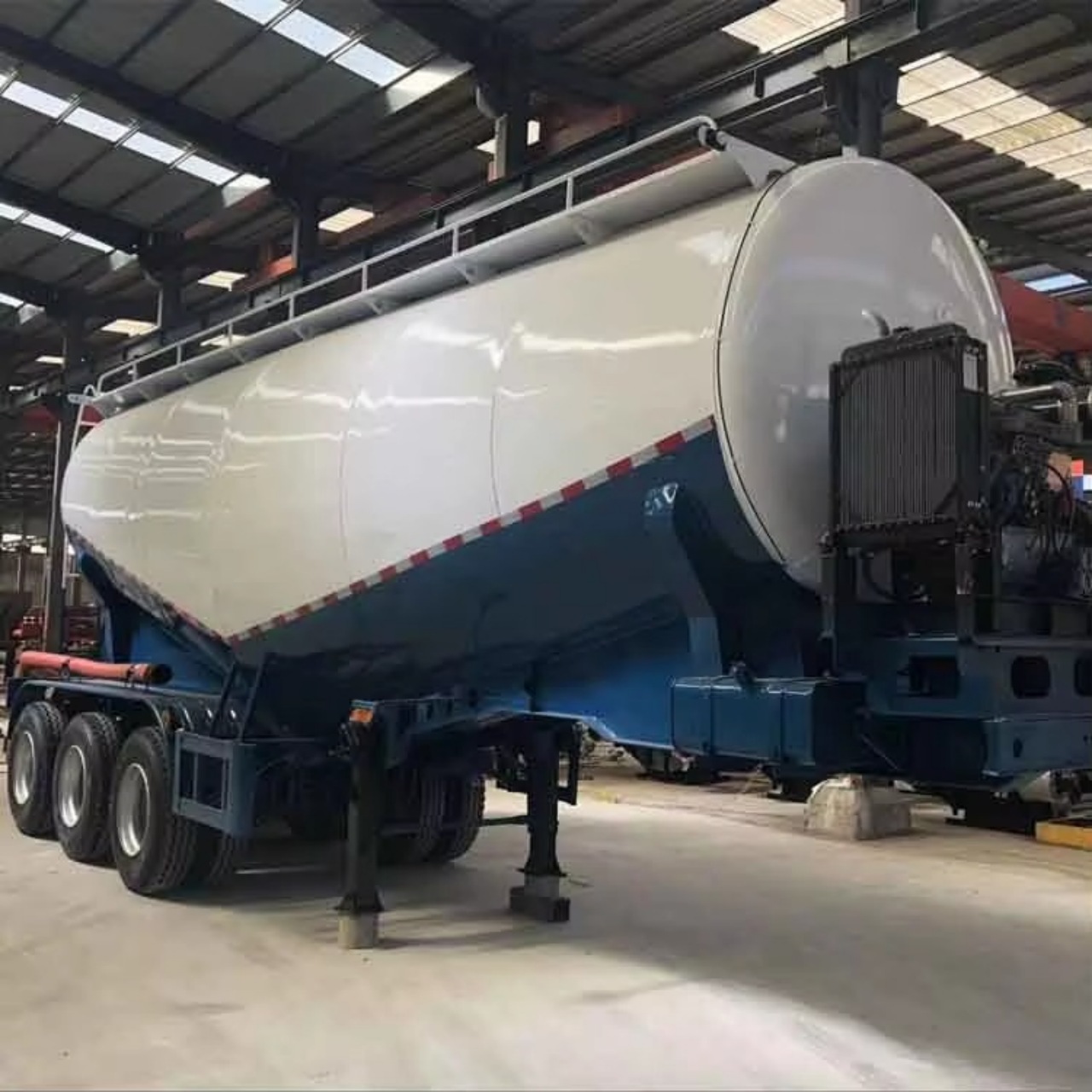
Challenges and Considerations
Despite their advantages, pneumatic trailers do come with certain considerations:
- Initial Cost: Pneumatic trailers and their associated compressors and piping systems can be more expensive than traditional trailers.
- Maintenance: The pressurized systems require regular maintenance, including cleaning of filters, valves, and aeration pads.
- Weight Limitations: Because of their solid construction and pressure-rated tanks, these trailers can be heavy, which may reduce payload compared to other trailer types.
- Cleaning Requirements: Especially for food-grade transport, strict cleaning procedures must be followed between loads to avoid cross-contamination.
Conclusion
A pneumatic trailer is an indispensable tool in the transportation of dry bulk materials, combining efficiency, safety, and cleanliness into 1 robust system. Whether moving powdered cement across a construction region or delivering food-grade flour to a processing plant, these trailers streamline the unloading process and reduce contamination risks. While they may require more upfront investment and maintenance, the operational advantages they offer make them an essential asset in modern logistics. As industries continue to demand faster, cleaner, and safer transportation methods, pneumatic trailers will undoubtedly remain at the forefront of dry bulk hauling.
